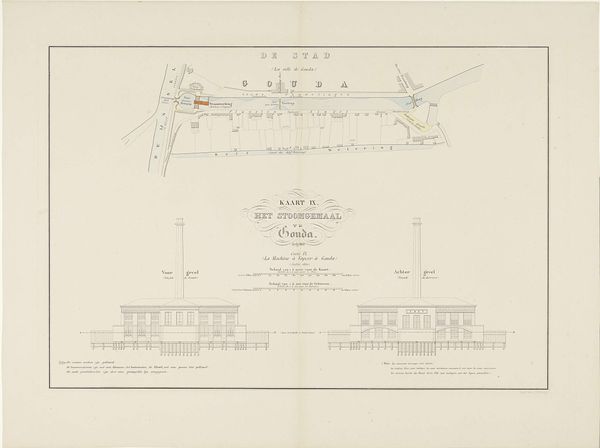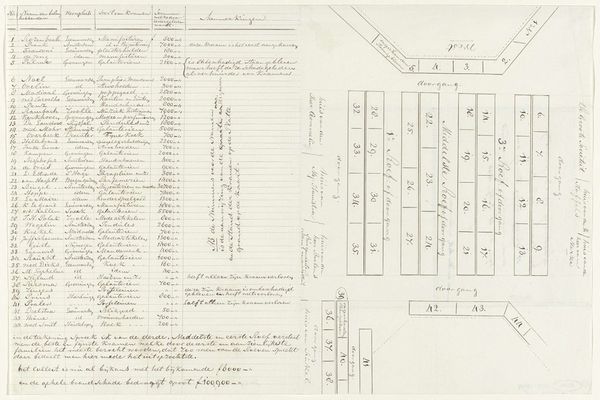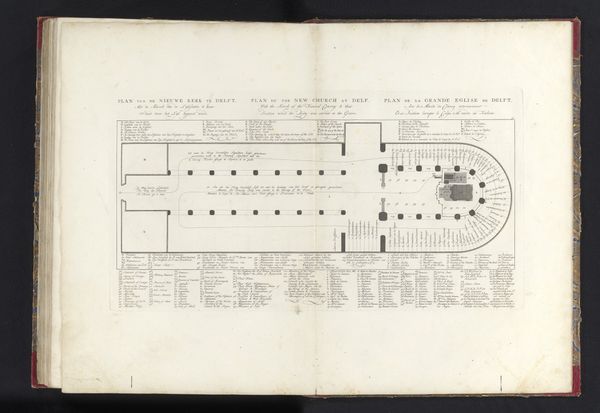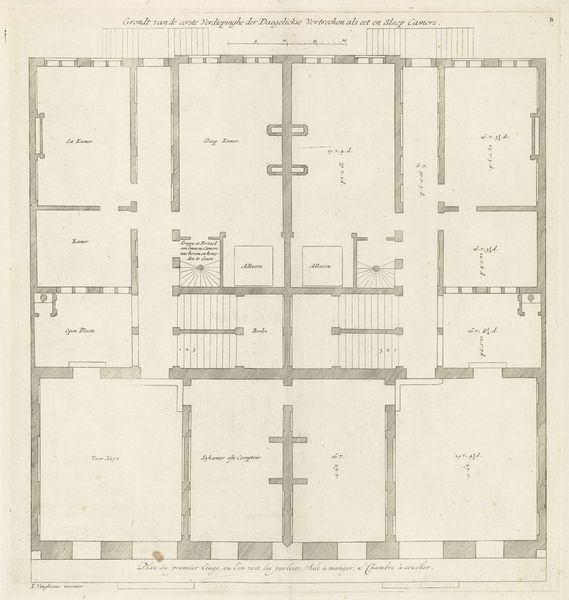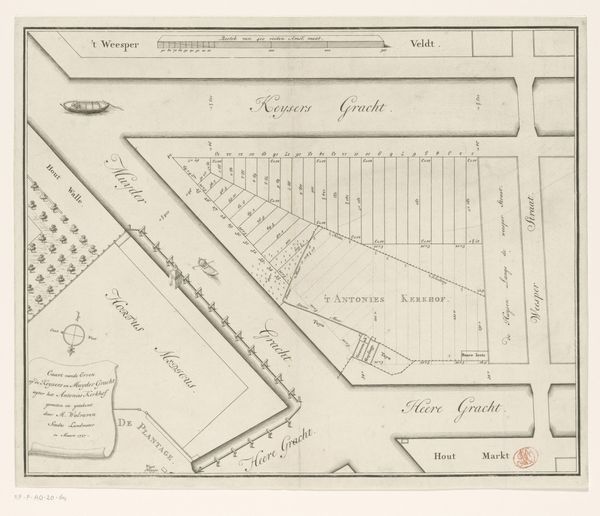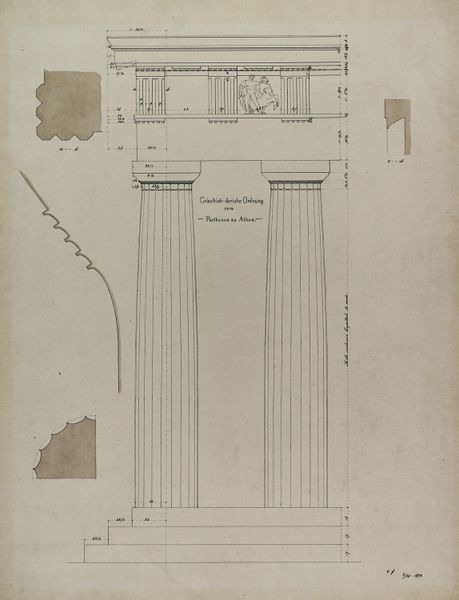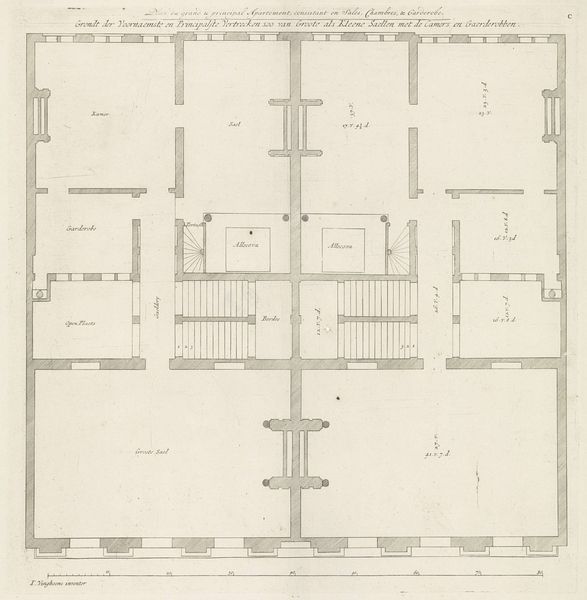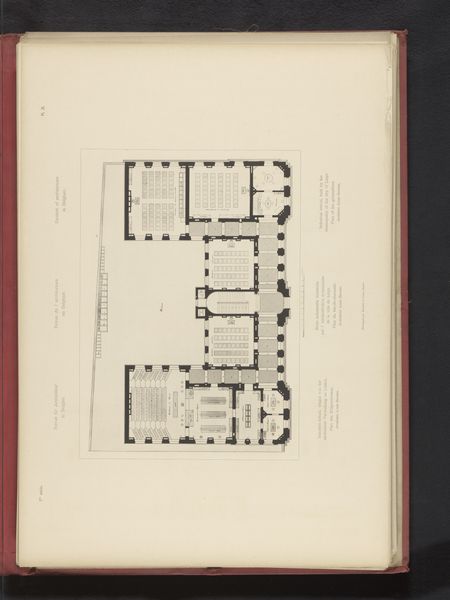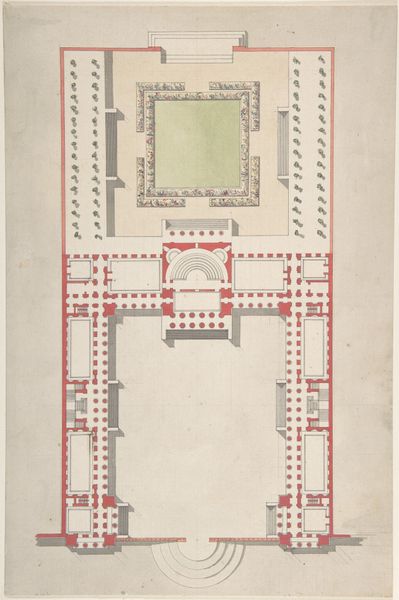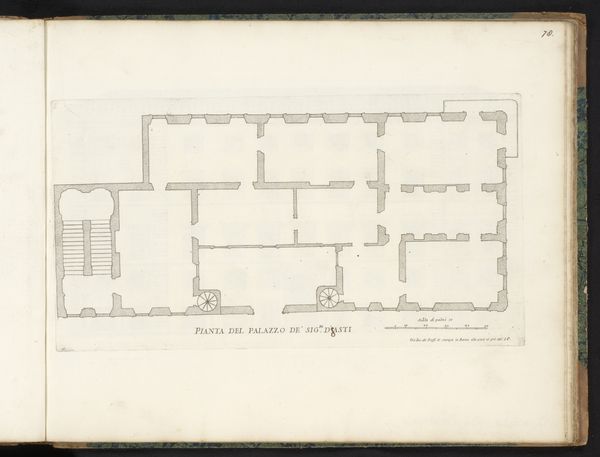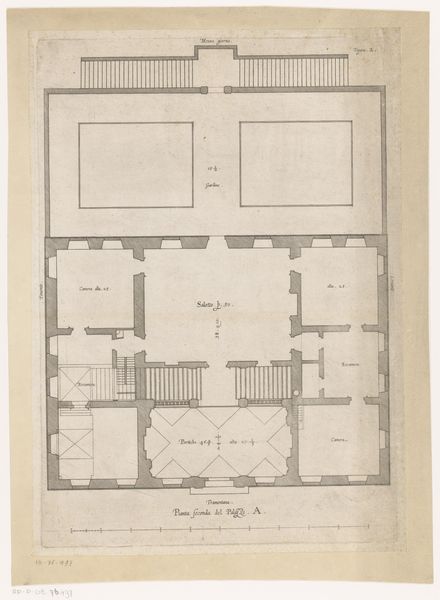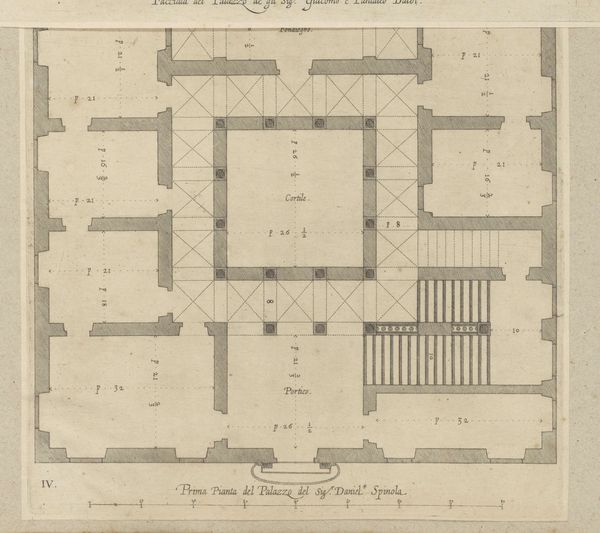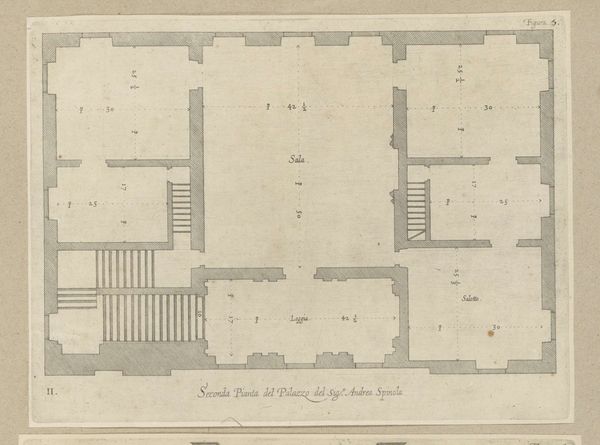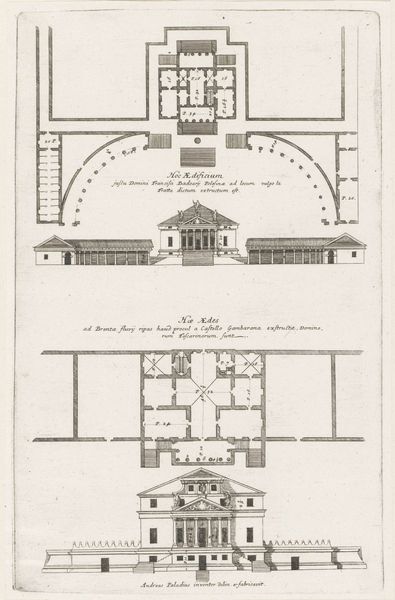
drawing, paper, ink
#
drawing
#
dutch-golden-age
#
paper
#
ink
#
cityscape
#
history-painting
#
academic-art
Dimensions: height 392 mm, width 460 mm
Copyright: Rijks Museum: Open Domain
Curator: What strikes me immediately about this Dutch drawing from 1840, rendered in ink on paper, is the rigid order of its layout. It feels less like a vibrant gathering and more like an inventory. Editor: It’s called "Schets van de Tweede Kamer der Staten Generaal. Buitengewone Zitting van 1840," by H. Reding, and it depicts a seating chart for an extraordinary session of the Dutch Parliament. The format is fascinating—almost bureaucratic. Curator: Bureaucratic indeed. Look how the script reinforces the strict, regimented divisions of space. We see ranked seating arrangements and lists upon lists...it's an interesting artifact for examining class and social structure through architectural visualization. Editor: It certainly reveals a visual encoding of power dynamics, doesn’t it? Each province is meticulously labeled, a testament to regional representation within a centralized system. But this order…it feels performative. Is it truly representative or idealized? Curator: Perhaps both? Symbols of power are always constructed. And this bird’s-eye view lends itself to a specific kind of narrative. Imagine being an observer charting social hierarchy! What's lost when reduced this kind schematic view, devoid of individual stories or emotional depth? Editor: Exactly! Who had access? Who was relegated to the margins? Who's absent? We need to dig into the social and political upheaval occurring in 1840 in the Netherlands to see how this diagram might reflect power shifts. Think colonial tensions and nascent democratic ideals jostling for space. This isn't just spatial data; it's loaded. Curator: I'm drawn to the act of representation itself—the conscious choices of what to include and omit. It's easy to fixate on what’s directly presented but considering the unrepresented might offer richer insight. What's hidden between these neatly inked lines? Editor: The drawing really forces us to interrogate our assumptions about order, representation, and access. What narratives were being deliberately written and erased during this "extraordinary session"? Curator: Indeed, what enduring echoes resonate from this deliberately constructed stage? Editor: Exactly. What a valuable resource for imagining how governance takes spatial form!
Comments
No comments
Be the first to comment and join the conversation on the ultimate creative platform.
